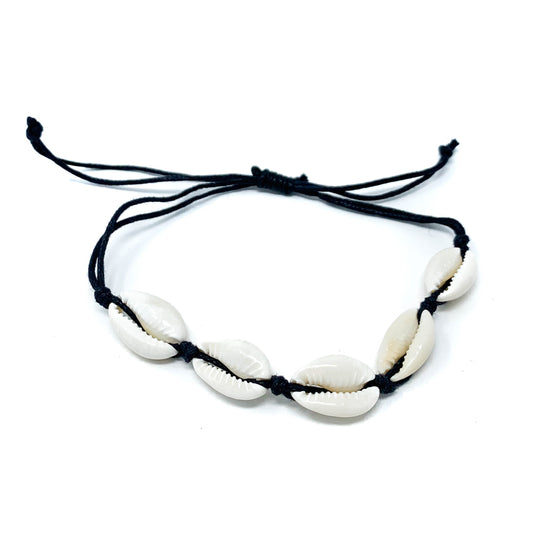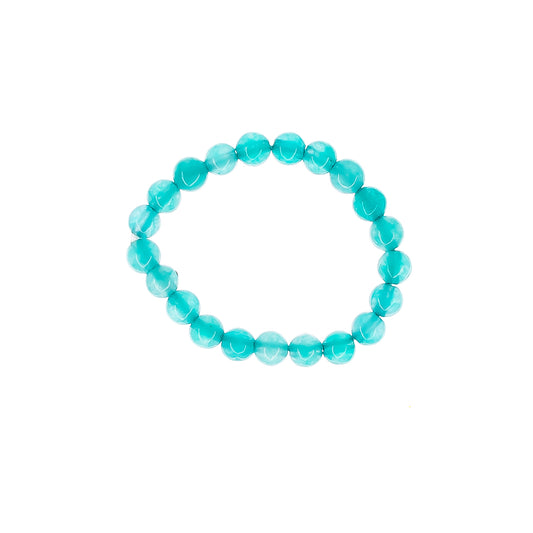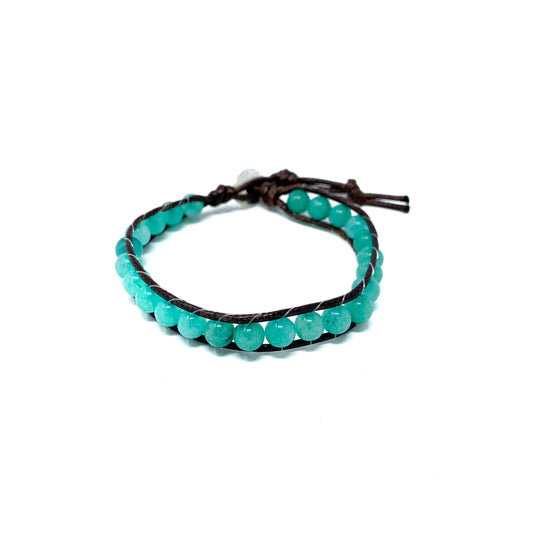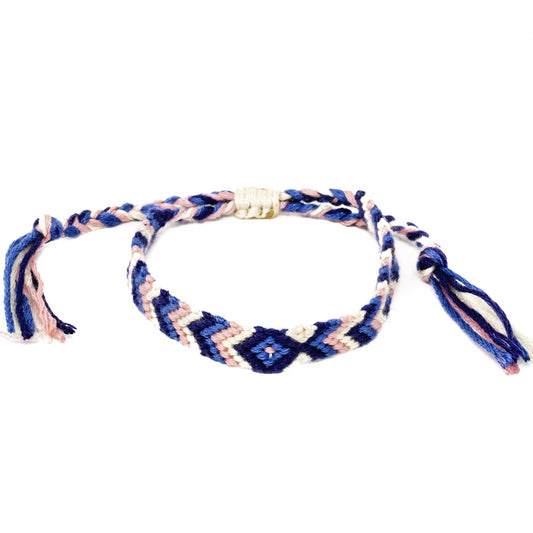When we think about surfing, we imagine ocean beaches and large rolling waves. For those who find themselves in inland locations, they can feel hopeless in ever being able to surf. This need not be. This article is for those who don't have ready access to the ocean. Here we will share several ways everyone everywhere can enjoy the surf spirit.
When it comes to inland surfing, people have even surfed the Great Salt Lake in Utah. It's not the most common place to catch a wave, as the water is relatively shallow. However, usually before a storm, there are times when the salt lake does produce white caps. If you're ambitious and find yourself in Utah at the right time, you might give it a go!
You can surf many more inland area's than the salt lakes, and many people have a great time doing it. Our necklaces and bracelets are made to help you feel the beach atmosphere no matter where you live.
Here are five ways you can still surf if you don't live near the ocean.
1. You Can Surf the Great Lakes in the Midwest
The Great Lakes are Lake Superior, Lake Michigan, Lake Huron, Lake Erie, and Lake Ontario. The lakes contact Minnesota, Wisconsin, Illinois, Michigan, Ohio, and even Pennsylvania. These vast bodies of water provide a different kind of surfing experience.
Here are a few ways that surfing the Great Lakes is different from surfing the ocean.
- Wave size
- Colder temperature
- Weather conditions
Let's review in more depth below.
Wave Size
The waves of the Great Lakes are not as small as you might think. They can be quite squirrely and surprise more surfers who venture into these cool freshwaters. On a day with the right conditions, the waves can reach heights of greater than 8 feet. In the northern Lake Superior, there have been waves reported the height of 28 feet.
If you listen to surfers who have spent time surfing the Great Lakes and the ocean, they will say that the lakes are actually more dangerous. Conditions can change rapidly, and the freshwater is less buoyant than the salty waters of the ocean. This causes the water to pull you under with greater intensity.
The Great Lakes are Cold
Where oceans are around 60 degrees Fahrenheit overall (warmer at the surface), the Great Lakes can become as cold as 40 degrees Fahrenheit. This, of course, ranges throughout the year. You can find Lake Michigan to be a more tolerable 75 degrees at the water's surface in the summer months.
You may want to break out the dry suit if you dare to catch the Great Lakes' frigid waves. If you plan on doing any cold water surfing, check out our article on surviving the icey waters.
Weather Conditions
If you choose to look for waves in the winter, then prepare for snow and ice. Another difference is how fast the weather can change. In the ocean, meteorologists see storms coming from a ways off and usually get out a proper warning. The Great Lakes are known for how fast the weather can change. Before you know it, the wind is raging, and the waves are crashing.
2. Inland River Surfing
This trend is beginning to catch on in places like Dayton, Ohio, where people surf the Dayton River. Of course, the conditions are not always right for traditional wave surfing, so many people will learn stand up paddle-boarding as well.
Stand up paddleboarding is not only a fun summer activity to satisfy a wave craving, but it's also a great way to stay in shape for traditional surfing. The paddling works your upper body, while you still need to use the same muscle for establishing balance on the board.
Some inland rivers are even replacing old dams with artificial wave machines. We will talk more about wave pools below.
3. Wave Pools
Wave pools are catching on like fire. The newest technology allows some parks can create up to 1000 waves per hour. The development of effective artificial waves has been dubbed the surfer's equivalent to the ski-lift. After the skiing industry manufactured lifts, the sport began to boom. And many believe a similar phenomenon will occur in surfing.
Though wave parks are sometimes frowned upon by purists, they serve a purpose. Practicing and controlled conditions for beginners are several reasons; however, the top reason might be that wave parks offer access to a wave-riding experience for folks who don't live near the ocean.
Here's a list of wave pools and parks around the USA.
4. Wake Surfing
The great advantage of wake surfing is the ability to do it anywhere with an appropriate water source. Just get the right boat and equipment, and you're off on a wake surfing adventure. There are even wave enhancing features that can be added to a boat to create the perfect waves for your surfing enjoyment. If you don't have the proper boat for wake surfing, you can usually still wakeboard.
The difference between wake surfing and wakeboarding is that wakeboarding is performed further behind the boat while holding a line. The wake surfer must be closer to the boat, which would be dangerous with a regular boat with a protruding propeller. Regardless, both forms are crazy fun and a great way to get in some inland surfing.
5. Windsurfing and Kitesurfing
Maybe we saved the best for last. You be the judge, but a mix of flying and surfing sounds pretty rad to us. This sport has a passionate following. And rightly so, the ability to ride the wind and the waves can invigorate even the most somber soul.
The Columbia River Gorge in Oregon and the blue waters of Lake Michigan are just a few of the possible areas for inland kitesurfing. However, anywhere with some wind and water could be a potential spot for kitesurfing.
We've included windsurfing and kitesurfing together as they follow the same principle of surfing with the wind; however, they are functionally different. Kitesurfing is essentially what it sounds like - surfing while holding a large kite to catch the wind. While windsurfing is more like surf sailboating, as you have a sort of sail attached to your surfboard. Both are awesome, and a great way to surf if you live inland.
Final Words
There are no barriers if you want to get into surfing, even if you live on the plains of Kansas, there is likely somewhere surf-able within driving distance. Don't let anything stop you. Let your lungs fill with adventure as you search for the best secret surf spots. If you'd like to learn about more exotic surf locations, see our article on the surfer's bucketlist.
Written By: Gideon Zielinksi





